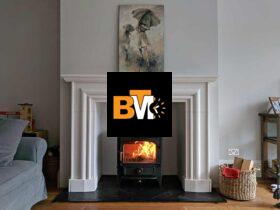Renovating a home can be exciting, but it’s not without its risks. Hidden issues often lurk behind walls, under floors, or even in plain sight, waiting to disrupt your plans and inflate your budget. Whether you’re preparing for a full home remodel or tackling a roofing project, identifying potential problems beforehand can save you time, money, and stress.
Here’s a practical guide to spotting these issues early and avoiding renovation disasters.
Steps to Inspect and Spot Hidden Issues in Home Renovating
1. Start with a Detailed Inspection
Begin by walking through your home and inspecting every area closely. Pay special attention to signs of damage:
- Water stains on ceilings or walls could indicate a leaking roof or plumbing issues.
- Cracks in the foundation may signal structural problems.
- Sagging floors might suggest weakened supports or hidden water damage.
For roofing, check for missing shingles, moss growth, or soft spots. These could point to leaks or underlying damage. If climbing onto the roof isn’t safe, hire a professional inspector. A blog here from an expert roofing company can provide insights into what to look for during inspections.
2. Check for Mold and Mildew
Mold and mildew are common in homes with poor ventilation or water damage. Look for black, green, or white spots in damp areas like bathrooms, basements, or under sinks. A musty smell can also be a giveaway.
If you find mold, it’s essential to address the source of moisture. Mold removal is costly, but ignoring it can lead to serious health risks.
3. Inspect Plumbing and Electrical Systems
Outdated plumbing and electrical systems can cause major problems during renovations. Check for:
- Corroded pipes or signs of leaks under sinks and in basements.
- Flickering lights or tripped breakers, may indicate wiring issues.
Consider hiring a licensed professional to evaluate these systems. Replacing faulty wiring or plumbing during the renovation is often easier and cheaper than fixing it later.
4. Investigate Walls and Floors
Hidden problems often lie beneath surfaces. Walls and floors can hide pests, mold, or structural issues. Tap on walls to check for hollow sounds, which could indicate termite damage. Look for:
- Bubbling paint, which may suggest moisture problems.
- Uneven floors, which could point to foundation settling or joist issues.
For homeowners focusing on roofing, remember that water damage on ceilings might originate from roof leaks. A poorly sealed roof can allow moisture to seep into walls, creating additional issues.
5. Pay Attention to Doors and Windows
Doors and windows that don’t open or close properly can indicate shifting foundations or warped frames. Gaps around windows or doors might let drafts in, driving up energy costs. Inspect seals and caulking for wear and tear.
If you’re planning to replace windows or doors, address underlying issues first. For instance, fixing a misaligned frame before installing new windows ensures a better fit.
6. Assess the Roof Carefully
The roof is one of the most critical areas to inspect before renovating. It protects your home from the elements, and problems here can escalate quickly. Look for:
- Missing or damaged shingles, which may lead to leaks.
- Pooled water on flat roofs, indicating drainage issues.
- Rusty flashing around chimneys and vents, can allow water to seep in.
If you’re uncertain about your roof’s condition, consult a roofing specialist. Many roofing companies offer free inspections to help identify issues. You might even find a helpful blog here explaining how to spot problems like loose shingles or clogged gutters.
7. Test for Asbestos and Lead
Older homes may contain asbestos in insulation or lead in paint. Both materials pose serious health risks if disturbed. Before starting demolition or major renovations, have your home tested by a certified professional.
Removing asbestos or lead can be expensive, but it’s necessary to protect your health and meet legal requirements.
8. Look for Pests
Termites, rodents, and other pests can cause extensive damage if left unchecked. Common signs include:
- Hollow wood that crumbles easily.
- Droppings in basements, attics, or cabinets.
- Chewed wiring or insulation.
A pest inspection can identify infestations and provide solutions. Address these issues before renovating, as pest damage can worsen during construction.
9. Consider Air Quality and Ventilation
Poor air quality often points to hidden issues like mold, pests, or inadequate ventilation. Test for:
- High humidity, which can encourage mold growth.
- Dust accumulation, which may indicate dirty HVAC ducts.
Improving ventilation not only makes your home more comfortable but also prevents future problems.
10. Document Everything
Before making any changes, document your home’s current condition. Take photos of areas you suspect might have problems. This serves as a record and can be helpful if disputes arise with contractors later.







Leave a Reply